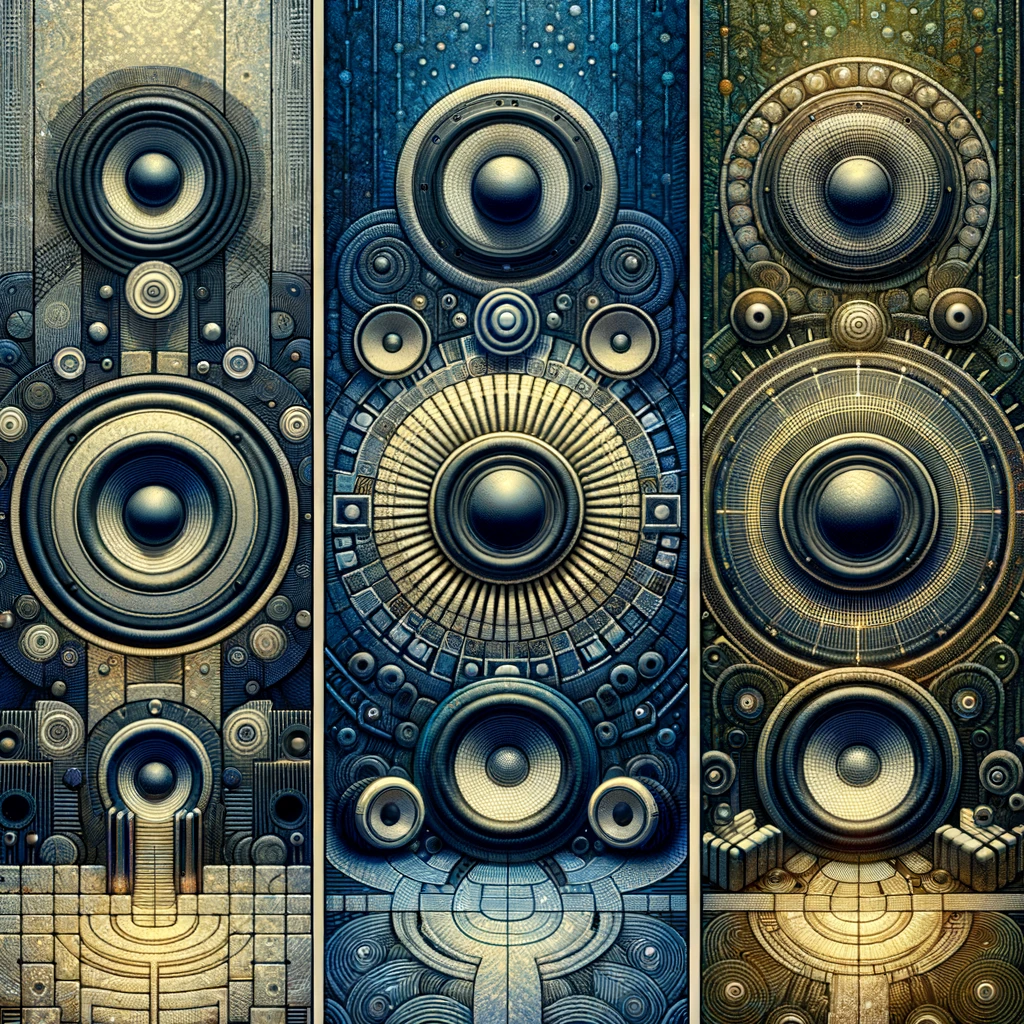Ever wondered what’s behind the music that moves you, the podcast that enlightens you, or the movie sound effects that thrill you? At the heart of these experiences are the audio systems – the unsung hero.
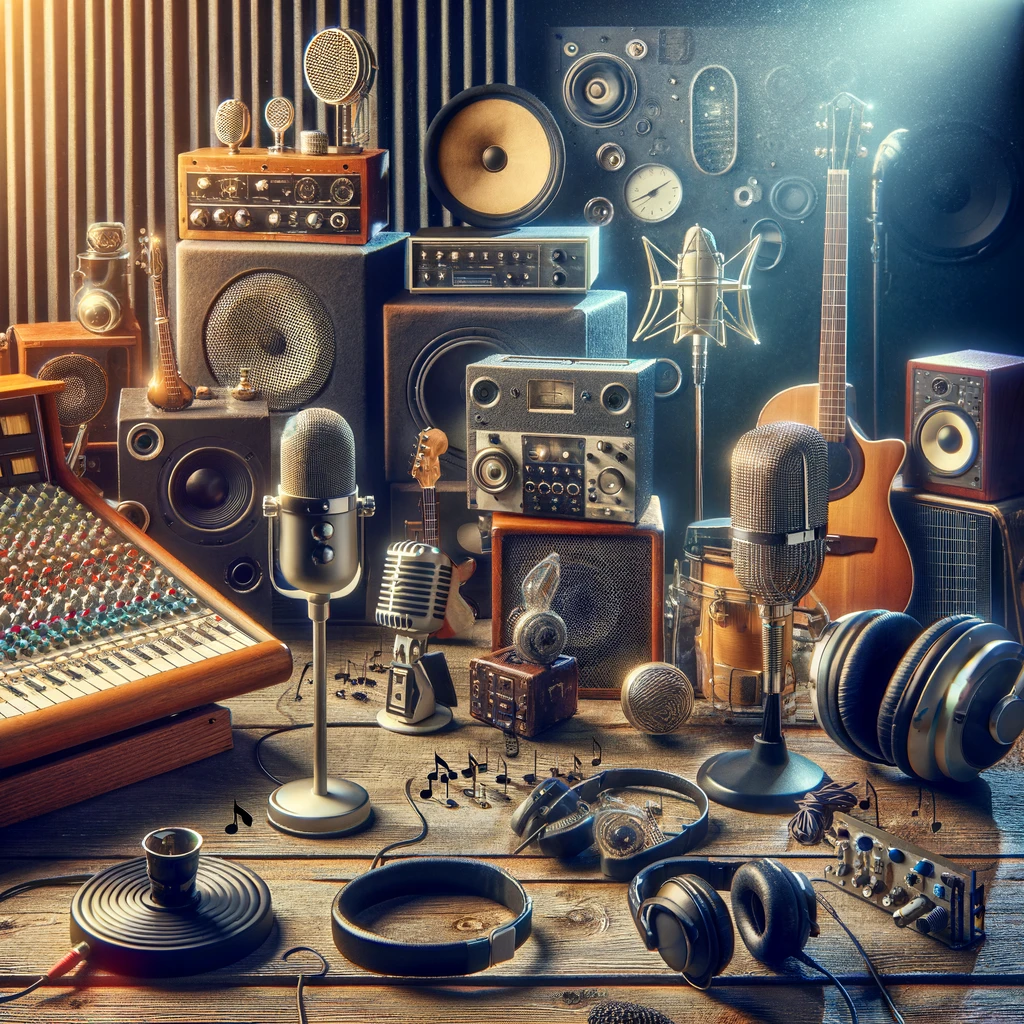
For AV professionals and enthusiasts, getting to grips with audio systems basics isn’t just about fiddling with knobs and buttons; it’s about tapping into the full sonic potential to craft immersive soundscapes. Whether you’re dreaming up a state-of-the-art home theater, dialing in the perfect sound for a professional recording studio, or simply enhancing your daily music experience, diving into the fundamentals can radically transform your interaction with sound.
Understanding Sound Fundamentals

Why all the fuss about sound waves, frequency, and amplitude? These aren’t just technical jargon; they’re the cornerstone of audio magic. Sound is essentially a physical phenomenon that moves through the air in waves. Whether you’re strumming a guitar, hitting a drum, or speaking, you’re setting off vibrations. These vibrations, or sound waves, have two main features that you’ve likely heard of:
- Frequency deals with the pitch of the sound. Imagine the difference between the chirp of a bird (high frequency) and the growl of a thunderstorm (low frequency).
- Amplitude controls the volume. Higher amplitude equals a louder sound, capable of filling a room or creating a subtle backdrop.
Getting a handle on these concepts is crucial for anyone dabbling in audio systems design or usage, impacting everything from system setup to how sound is perceived in different environments.
The Physics of Sound

At its core, sound is energy that propagates through air (or any other medium) as a wave. These waves are created by vibrating objects and are captured by our ears and then interpreted by our brains. This process is what allows us to experience the world in such a rich auditory way. Understanding this can help AV professionals create more effective audio setups by considering how sound waves interact with the environment.
The Role of Frequency and Amplitude
- Frequency: Not only does frequency affect pitch, but it also influences how we perceive the direction of sound. Higher frequencies are easier to locate than lower ones. This is why, in a surround sound setup, tweeters (which produce high frequencies) are crucial for creating a soundstage that envelops the listener.
- Amplitude: Beyond simply the volume, amplitude can affect the emotional impact of sound. Lower amplitudes can create intimacy, while higher amplitudes can generate excitement or tension. This dynamic range is a powerful tool for AV installers and designers to manipulate the mood of an audience.

Harmonics and Overtones
Another layer to understanding sound is harmonics and overtones, which add richness and depth to music and speech. When a guitar string vibrates, it doesn’t just produce a single frequency (the fundamental tone) but also generates multiple higher frequencies (overtones). These overtones are integral to the characteristic sound of instruments and voices. Knowledge of this can help audio professionals choose equipment that preserves these nuances, enhancing the listening experience.
The Importance of Phase
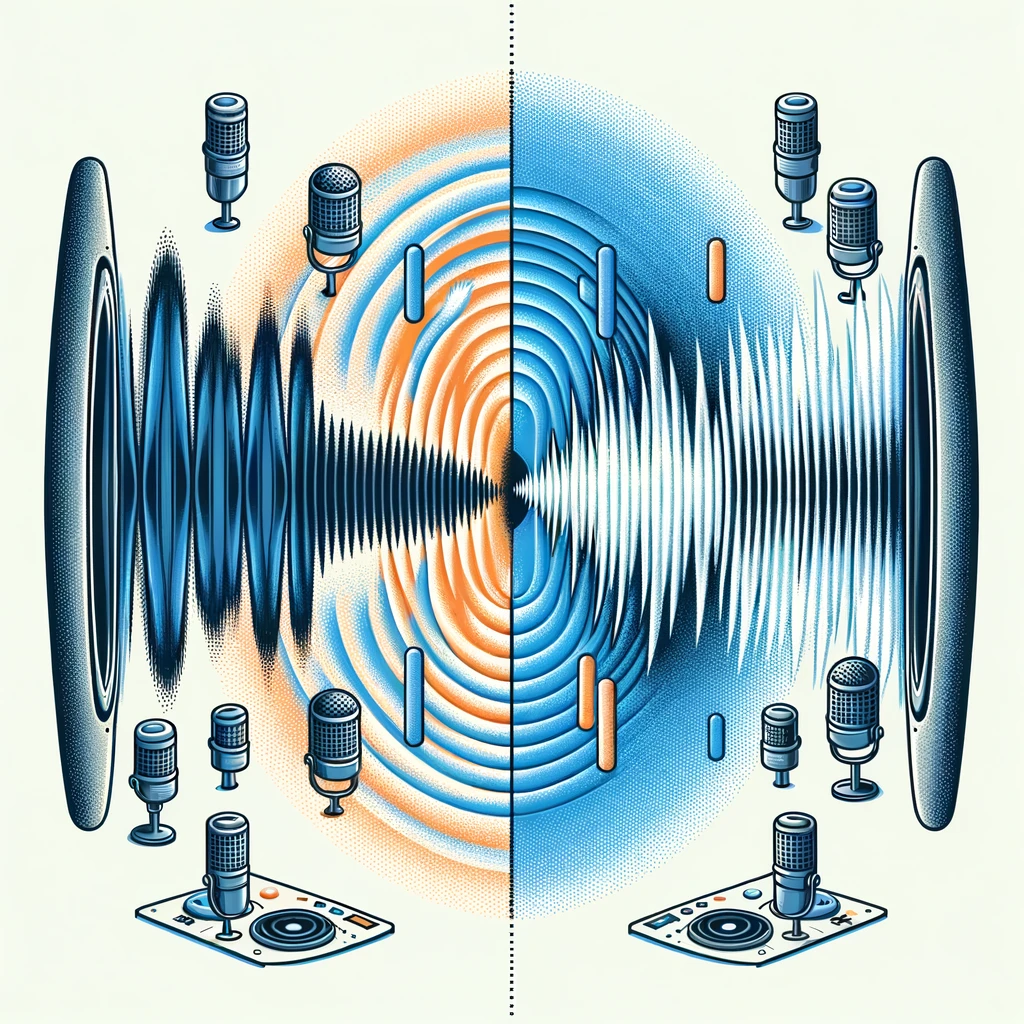
Phase refers to how sound waves align with each other. When waves are in phase, they amplify the sound; when they’re out of phase, they can cancel each other out, causing a “thin” or “hollow” sound. This concept is crucial in setting up speakers and microphones for a podcast or recording session, where improper mic placement can lead to phase issues and degraded audio quality.
Types of Audio Systems

When it comes to audio systems, one size does not fit all. We’ve got mono, stereo, and surround sound systems, each bringing something special to the table:
- Mono Audio Systems send the same sound through every speaker. They’re straightforward and reliable, perfect for public announcements where the spatial sound isn’t the main focus.
- Stereo Systems use two distinct channels (left and right) to create a broader, more dynamic sound stage, ideal for most music and radio experiences.
- Surround Sound Systems take it up a notch with multiple speakers around the listener, crafting an all-encompassing audio environment perfect for movies and gaming.
Components of Audio Systems
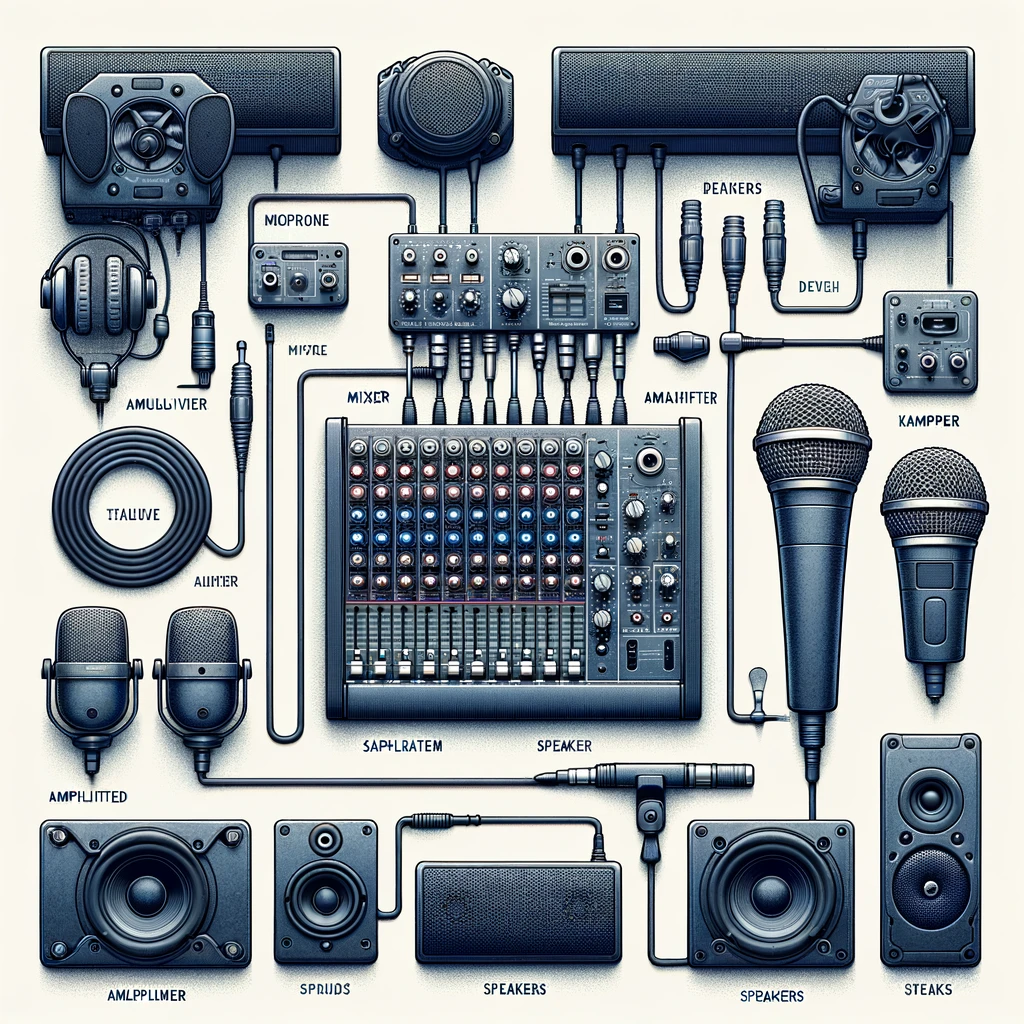
At the core of any audio system, you’ll find essential components: microphones, mixers, amplifiers, speakers, and DSP (Digital Signal Processors), each with a vital role in capturing, tweaking, and reproducing sound:
- Microphones: The frontliners of sound capture, microphones convert acoustic sound waves into electrical signals. Selecting the right microphone—be it dynamic, condenser, or ribbon—is pivotal depending on the use case, from live performances to studio recordings.
- Mixers: The alchemists of the audio world, mixers allow us to blend multiple audio sources, adjust levels, and apply effects. They range from simple two-channel models for basic podcast setups to complex consoles for live events, each offering unique capabilities for precision sound crafting.
- Amplifiers: Serving as the muscle, amplifiers boost the low-level audio signal from mixers or media players to a level robust enough to drive speakers. Their power and clarity are essential in translating the mixer’s output into impactful sound without distortion.
- Speakers: The final output of the audio chain, speakers convert amplified electrical signals back into sound waves. The choice between bookshelf speakers, floor-standing models, or specialized studio monitors depends on the environment and the desired sound quality.
- Digital Signal Processors (DSP): The brain behind the operation, DSPs process the audio signal digitally to optimize sound quality. They can equalize audio, compress dynamics, and even correct room acoustics, ensuring the listener receives the best possible experience.
The right mix of these components depends on your needs, whether it’s capturing the nuance of a voice for a podcast or shaking the room with a movie soundtrack.
Choosing the Right Components
Selecting the right components is a balancing act between budget, performance, and the specific needs of your project. Consider the end goal: Is it clarity and fidelity for studio recordings, or durability and power for live performances? Understanding the role and capability of each component within your system is key to making informed decisions that enhance your audio experience.
Introduction to Balanced Audio

Aiming for crystal-clear sound? Balanced audio steps into the spotlight here, minimizing noise interference that often plagues unbalanced audio setups. This tech cleverly sends audio signals over three wires (two signals and one ground) to cancel out any noise picked up along the way. XLR connectors are the champions of maintaining sound quality over distance, making them a staple in professional audio setups. check our Solderless Balance Audio end points.
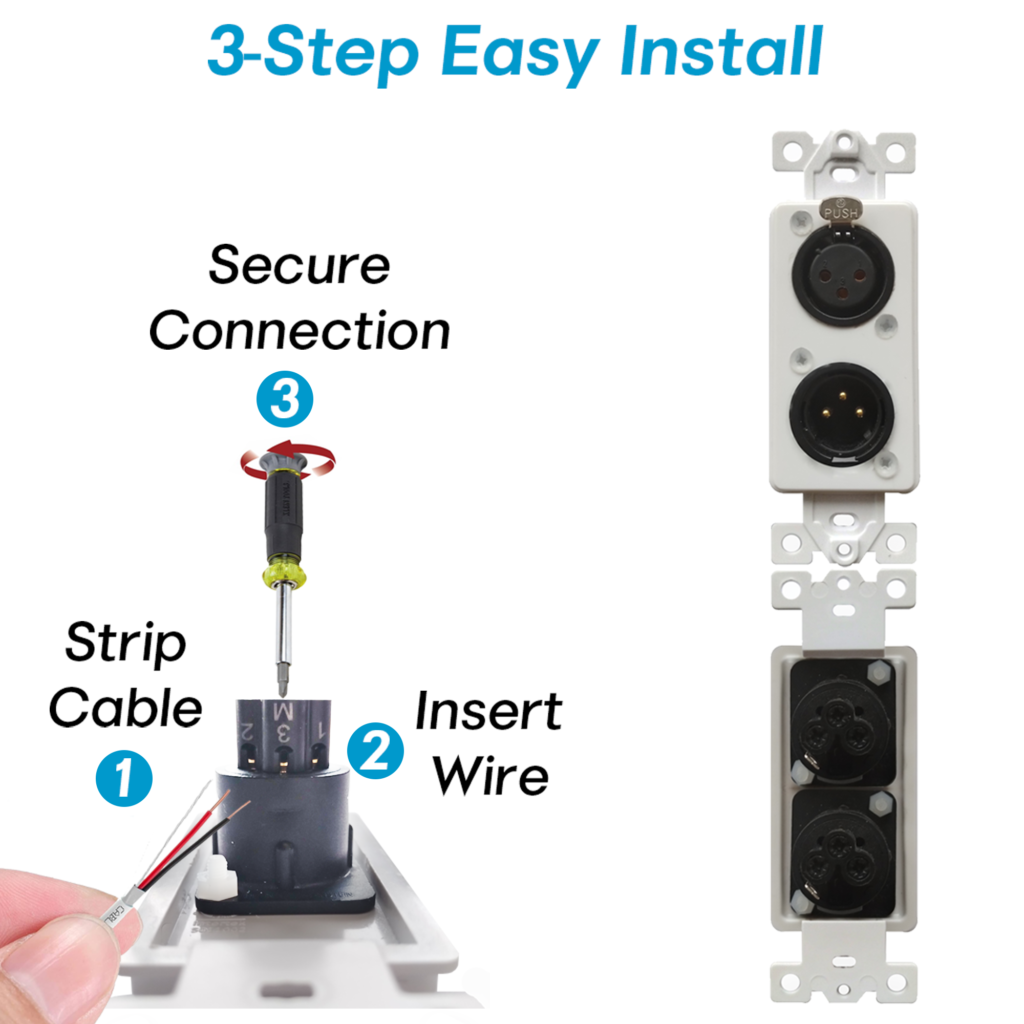
Audio Systems Setup Basics
Setting up audio systems might seem like a daunting task, but understanding the signal flow can simplify the process:
- Start with the Source: Identify your audio sources, such as microphones, instruments, or media players. Each source will need to be connected to the mixer or directly to an audio interface if you’re working in a digital domain.
- Signal Processing: Use mixers and DSPs to adjust levels, apply effects, and fine-tune the sound. This step is crucial for achieving the desired balance and clarity in your audio output.
- Amplification: Ensure that the processed audio signal is amplified appropriately for your speakers. This step is about matching the amplifier’s power output with the speakers’ capacity to handle it without distortion or damage.
- Output Through Speakers: Finally, the amplified signal is sent to the speakers, translating it back into sound waves that fill the space. Speaker placement and room acoustics play a significant role in the overall sound quality.
Common Pitfalls to Avoid
- Overlooking Room Acoustics: The room’s shape, size, and surfaces can greatly affect sound quality. Consider acoustic treatments to mitigate unwanted echoes or reflections.
- Ignoring Cable Management: Proper cable management not only keeps your setup neat but also prevents interference and signal degradation.
Maintaining and Troubleshooting Audio Systems
Regular maintenance and prompt troubleshooting are key to the longevity and performance of audio systems:
- Routine Checks: Regularly inspect cables, connections, and components for wear and tear. Clean dust from equipment to prevent overheating and signal interference.
- Firmware Updates: Keep digital equipment, like mixers and DSPs, updated with the latest firmware to ensure optimal performance and access to new features.
- Troubleshooting Common Issues:
- No Sound: Check all connections and ensure all components are powered on. Verify that the mixer or audio interface is properly routing the signal.
- Hum or Buzz: Often caused by grounding issues or cable interference. Ensure cables are properly shielded and not running parallel to power cables.
- Feedback: Usually occurs when microphones pick up sound from speakers. Adjust the mic placement or use directional microphones to mitigate this issue.
When to Seek Professional Help
While many common issues can be resolved with basic troubleshooting, We encourage you not to navigate the complexities of audio systems alone. For personalized support, expert advice, or if you’re facing persistent issues that affect your system’s sound quality or functionality, reach out to us. Contacting SoundMate is easy and convenient—simply send us an email abc@soundmate.xyz or fill out a contact at the end of our homepage. Our team of experts is dedicated to ensuring your setup delivers the best possible sound quality, with minimal hassle and maximum satisfaction.
Visit our blog series for more insights and tips, and elevate your sound with SoundMate—where quality meets innovation.
